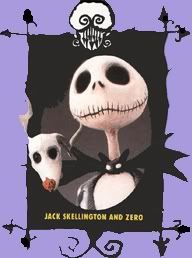The goth subculture has associated tastes in music, aesthetics, and fashion, whether or not all individuals who share those tastes are in fact members of the goth subculture. Gothic music encompasses a number of different styles. Common to all is a tendency towards a lugubrious, mystical sound and outlook. Styles of dress within the subculture range from death rock, punk, androgynous, medieval, some Renaissance and Victorian style clothes, or combinations of the above, most often with black attire, makeup and hair.
By the late 1970s, there were a few post-punk bands in the United Kingdom labeled "gothic." However, it was not until the early 1980s that gothic rock became its own subgenre within post-punk, and that followers of these bands started to come together as a distinctly recognizable movement. The scene appears to have taken its name from an article published in UK rock weekly Sounds: ‘The face of Punk Gothique’, written by Steve Keaton and published on February 21 1981. The opening of the Batcave in London's Soho in July 1982 provided a prominent meeting point for the emerging scene, which had briefly been labeled positive punk by the New Musical Express. The term "Batcaver" was later used to describe old-school goths.
Independent of the British scene, the late 1970s and early 1980s saw death rock branch off from American punk. In 1980s and early 1990s, members of an emerging subculture in Germany were called Grufti[e]s (English "vault creatures" or "tomb creatures"); they generally followed a fusion of the gothic and new wave with an influence of new romantic, and formed the early stages of the "dark culture" (formerly called "dark wave culture").
After the waning in popularity of post-punk, the subculture diversified both musically and visually. This caused variations in style ("types" of goth). Usually, the appearance of each of the "types" of Goth reflects a certain mindset, although not necessarily. Local scenes also contributed to this variation. By the 1990s, Victorian fashion saw a renewed popularity in the goth scene, drawing on the mid-19th century gothic revival and the more morbid aspects of Victorian culture.
By the 1990s, the term "goth" and the boundaries of the associated subculture had become more contentious. New subcultures emerged, or became more popular, some of them being conflated with the goth subculture by the general public and the popular media. This conflation was primarily owing to similarities of appearance, social customs, and the fashions of the subcultures, rather than the musical genres of the bands associated with them. As time went on, the term was extended further in popular usage, sometimes to define groups that had neither musical nor fashion similarities to the original gothic subculture.
This has led to the introduction of goth slang terms that some goths and others use to sort and label members of loosely related or at times unrelated subcultures. These include but are not limited to mallgoths in the US, dark in Latin America and Italy, hackians in New Zealand and spooky kids, moshers or mini moshers in the UK. More positive terms, such as mini-goths or baby bats, are also used by some older goths to refer to youths whom they see as exhibiting potential for growth into mature goths later on. The prevalence of internet-based information regarding goth has resulted in a distorted and overstated perception of varying slang terms as used in reality and offline, particularly with regard to those terms allegedly used outside of the UK and US.
The response of these newer groups to the older subculture varies. Some, being secure in a separate subcultural identity, express offense at being called "goth" in the first place, while others choose to join the existing subculture on its own terms. Still others have simply ignored its existence, and decided to appropriate the term "goth" themselves, and redefine the idea in their own image. Even within the original subculture, changing trends have added to the complexity of attempting to define precise boundaries


No comments:
Post a Comment